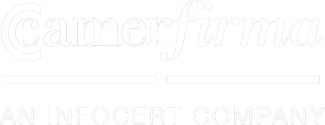Precision agriculture and the Internet of Things (IoT) are the two central themes of the Internet of Food and Farm 2020 (IoF2020) a project led by Wageningen University & Research and funded by the European Union with around €30 million.
The project brings together over 120 agricultural producers, breeders, and farmers. But the most interesting aspect of IoF2020 is probably its goal: to accelerate the adoption of IoT technologies in various areas related to agriculture and farming.
Precision farming, IoT sensors, and automation
The principle behind the IoT is that any object can communicate and exchange data with other objects and tools to optimize its operation or simply to collect and make available useful information.
IoT applied to agriculture involves the use of agricultural robots and sensors able to perform part of the agricultural work autonomously, collect data, process them, and make them available for more effective and efficient planning.
IoT Sensors
For example, IoT sensors provide accurate data on soil temperature, acidity, or moisture content to decide how to treat and if and how much to irrigate the soil according to the needs of the crops there. When connected to intelligent irrigation systems, sensors can also automatically optimize the irrigation level, so that the amount of water used is reduced without loss of yield.
Furthermore, in case of parasites or diseases about to spread in the soil or between plants, thanks to an IoT sensor it is possible to identify the disease outbreak and the exact point of propagation, to promptly intervene.
Sensors placed on instrumentation and agricultural machinery allow farmers to monitor their operating status from a smartphone.
Automation
To the sensors can be added the use of drones, also able to collect useful data, and the use of self-driven tractors integrated with robots, able to sowing, pruning, gathering products, and compensating for periods of scarce labor.
The need to plan activities periodically in advance, bringing together people and resources as necessary, represents a critical point in a sector where the unexpected is always just around the corner. Early or delayed maturation is enough to make a rapid re-planning necessary, with all the difficulties that this involves.
The use of robotics makes it possible to react quickly to unforeseen events with an automated process and to select how much is to be collected immediately and how much is postponed to a higher degree of maturity.
Communication security, a critical point in the application of IoT
In the direction of greater sustainability from an ecological, economic, and food safety point of view, it is now a fact that the future of agriculture rests on communications between IoT sensors, drones, robots, self-guided vehicles, as well as between humans and robotic counterparts. But these communications represent a critical point in terms of security and confidentiality of the data transmitted.
The increasing number of globally connected IoT devices increases the risk of theft, manipulation, and misuse of exchanged data.
A study conducted by Unit42, the Threat Intelligent Team of Palo Alto Networks, analyzed the security incidents that occurred in 2018 and 2019 in the United States of America. Taking into account 1.2 million IoT devices used in IT organizations and healthcare companies, the study found that 98 percent of all traffic generated by IoT devices is not encrypted. So it would be enough to overcome the first line of defense, such as a phishing attack, to intercept all unencrypted network traffic, collect sensitive information about people, and “monetize” it on the dark web.
How to add a trust level for the confidentiality of communications between IoT devices
To cope with such risks InfoCert has developed several solutions in the IoT field, to meet different needs:
- make communication and data transmission between devices more secure
- authenticate the source code to ensure its integrity
- keep data in a protected environment, ensuring its integrity, availability, and longevity.
In particular, InfoCert MID PKI – Machine IDentity Public Key Infrastructure – can manage the identity lifecycle of groups of IoT devices, starting from a procedure of identification and issue of a digital certificate that allows to start a secure and confidential data exchange with any PKI-enabled system.







